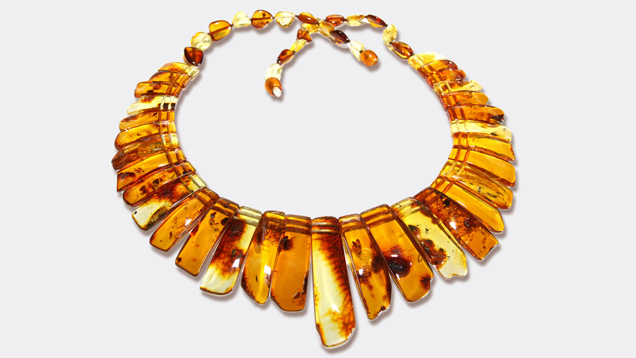Did you know that all amber is over a million years old? In addition to having a beautiful glow and a wonderful scent when rubbed or burned, this fossilized tree resin tells us a lot about ancient ecosystems. Around 1,000 extinct animal species and types of plant matter have been found in amber.

This particular amber from Poland weighs a whopping 135.5 carats and contains two scorpions and a few insects.
320 MILLION
The oldest amber dates to the Upper Carboniferous Period (approximately 320 million years ago).
6 TONS
The Amber Room, a 1716 gift presented to Russia’s Peter the Great, was made from six tons of amber.
TIME CAPSULE
1,000 extinct animal species as well as various types of plant matter have been identified in amber.
FACTS 1
- Organic, not mineral: Fossilized resin
QUALITY FACTORS
Assessment of the following characteristics determines amber’s value.
COLOR
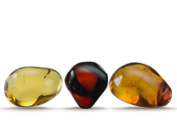
Amber comes in more colors than “amber.” Rare pieces can even be blue or green.
CLARITY
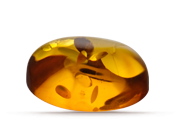
Amber with insect or plant inclusions is much more valuable than amber with none.
CUT
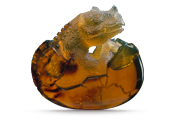
Most amber is polished in free-form shapes, cabochons or beads.
CARAT WEIGHT
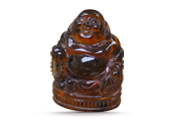
Amber is surprisingly light: in fact, it will float in a saturated salt solution.
Color
Although consumers are most familiar with yellow and golden amber, the gem can be white, yellow, and orange to reddish brown. Reddish amber is more valuable than golden amber, which is more valuable than yellow amber. Rarely, strong fluorescence can give amber a bluish or greenish appearance, which when attractive can be highly valuable. Oxidation might cause the material to change color over time.
Cutting and polishing amber for jewelry makes it more susceptible to oxidation by removing or thinning the harder exterior surface. Fine translucent yellow or orange amber can gradually darken to reddish brown and eventually black.
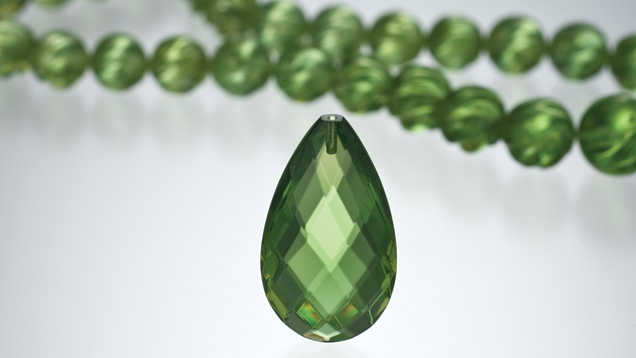
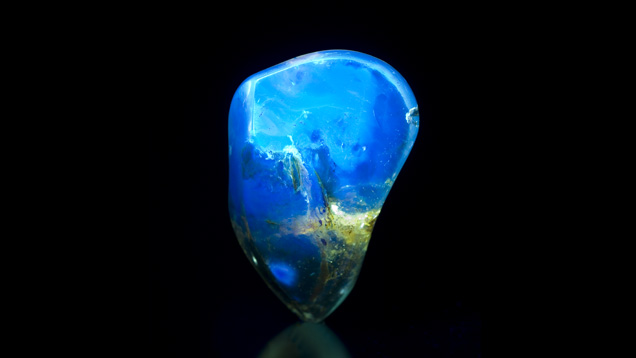
Transparent amber is more valuable than cloudy material. An interesting plant or animal inclusion adds to the value of an amber specimen.
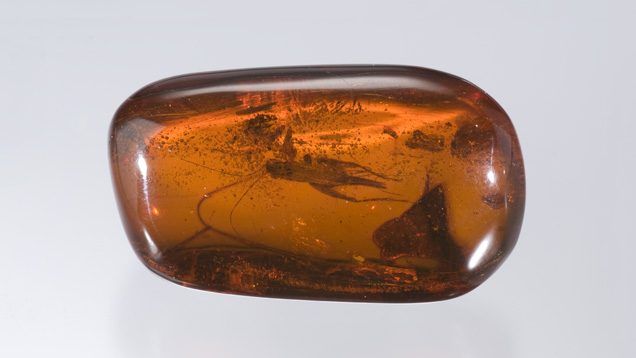
Cut
Amber is commonly polished into a free-form shape that follows the original shape of the rough. It might then be set into jewelry or drilled for stringing. Cutting styles for amber include beads, cabochons, and free-form polished pieces. Amber might be faceted, but this is rare.

Amber has a lower relative density than salt water so it can feel very light, even in large sizes. This makes it possible to use fairly large sizes in amber jewelry.
